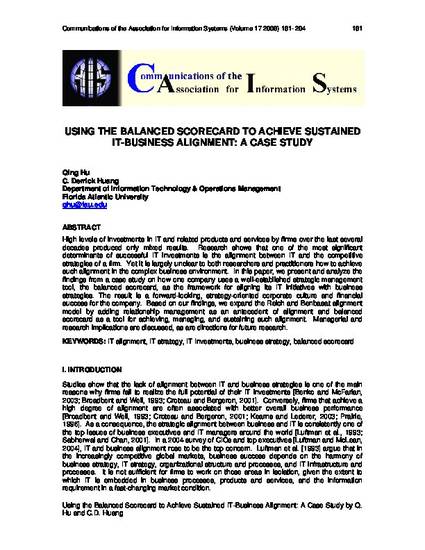
High levels of investments in IT and related products and services by firms over the last several decades produced only mixed results. Research shows that one of the most significant determinants of successful IT investments is the alignment between IT and the competitive strategies of a firm. Yet it is largely unclear to both researchers and practitioners how to achieve such alignment in the complex business environment. In this paper, we present and analyze the findings from a case study on how one company uses a well-established strategic management tool, the balanced scorecard, as the framework for aligning its IT initiatives with business strategies. The result is a forward-looking, strategy-oriented corporate culture and financial success for the company. Based on our findings, we expand the Reich and Benbasat alignment model by adding relationship management as an antecedent of alignment and balanced scorecard as a tool for achieving, managing, and sustaining such alignment. Managerial and research implications are discussed, as are directions for future research.
Available at: http://works.bepress.com/qing_hu/22/
